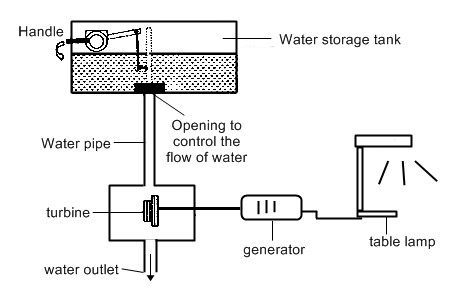
When it comes to PSLE Science, most students have problems handling Booklet B which is the “killer section” of the paper.
Previously, I have shared with you some tips on tackling different components of a Science exam paper. You might want to click on the link Useful Techniques to Tackle PSLE Science to find out more in case you have not read it.
During my years of invigilation in Science examinations, I have seen for myself many students who were not able to complete their papers on time.
A lot of them would write long paragraphs of explanation in answering Booklet B questions and ended up not able to complete the rest of the questions.
The worst is many of them did not even get any mark for the time and effort spent in answering one question.
I believe many students have the misconception that the more one writes for Science Booklet B, the more marks he/she will get.
As such, I am going to share with you some tips on how much a student should write for his/her answer in Booklet B.
Tip 1: Short answers
Not all questions in Booklet B require you to write a number of sentences. Some questions with keywords like “identify the variables”, “List the animals/objects”, “State an object”, “Name an object” need only short answers with one or few words.
Tip 2: Techniques
Questions that require you to “explain why or how”, “Give a reason” or “Describe” will need more detailed explanations. You can adopt the “RULE” Approach, “Cause-and-Effect” and “Begin-and-End” techniques (How to Score for Explanatory Questions in PSLE Science) to help you in analysing and determining the key concepts to elaborate on in sequence.
Tip 3: Number of lines
One effective way to determine how much to write for a question is to see the number of lines given to write your answer. Those with one line probably need one sentence of words while those with three or more lines given need more thorough elaboration with 2 or 3 key points to be explained in sequence.
Tip 4: Number of marks
Write according to the number of marks assigned for each question. For a one-mark question, you probably need one or two points/concepts/facts to get the mark.
For a two-mark question, you probably need two or three points/concepts/facts to get full mark.
Tip 5: Answer what is asked for
Read the question carefully and answer what is asked for exactly. Do not include points that are not relevant to the question. You will not be awarded marks for points that are not relevant or required in the question stem. Just go straight to the point.
Example
Ali made a steel rod into a temporary magnet using electricity. He made another temporary magnet using the same method but this time he used a thicker steel rod. Describe what he should do to find out which magnet was stronger. [2]
Sample Answer
The question can be broken into two parts:
Method (1m) - Put the 2 temporary magnets at the same distance away from some magnetic materials.
Conclusion (1m) – The temporary magnet which attracted more magnetic material is the stronger magnet.
Notes
Many students will just describe what should be done without concluding how to find out which is the stronger electromagnet. Hence, they will lose one mark.
Some students who do not read the question properly will even describe the procedure on how to make the steel rod into an electromagnet which is not required.
Tip 6: Follow instructions
Always read the question carefully and follow the instructions given.

If the question requires you to draw a set-up and label the parts, please do so. Many students make the mistakes of drawing set-ups without labelling the diagrams. As a result, they lose unnecessary marks.
See the example below on how a student needs to follow instructions in answering a question.
Example
Xiaoming designed a simplified hydro-electric power station by connecting the toilet flushing system to a generator as shown below.

Explain in details, using energy conversion, how electricity can be generated from this system. [2m]
Note
The question above clearly asks for explanation in term of energy conversion. Do not involve other concepts involving forces for example.
The question also asks for explanation in details. Thus, do not answer as following:
gravitational potential energy → kinetic energy → kinetic energy → electrical energy
The above answer is definitely not explained in details!
Sample Answer
As the handle is pulled, the gravitational potential energy of the water is converted to kinetic energy of the water which turns the turbine.
The kinetic energy of the turbine will then be converted by the generator to electrical energy for the table lamp to light up.
Conclusion
You do not have to write a lot of words or fill out half the paper with your explanation in order to score that one or two marks.
More importantly, read the question carefully and find out what the question really asks for.

Do a quick planning in your mind and recall the concepts/points/facts/data needed before answering in an orderly sequence which is straight to the point.
Use keywords whenever necessary and do not beat around the bush.
About the Author
Teacher Zen has over a decade of experience in teaching upper primary Math and Science in local schools. He has a post-graduate diploma in education from NIE and has a wealth of experience in marking PSLE Science and Math papers. When not teaching or working on OwlSmart, he enjoys watching soccer and supports Liverpool football team.



